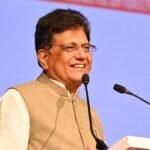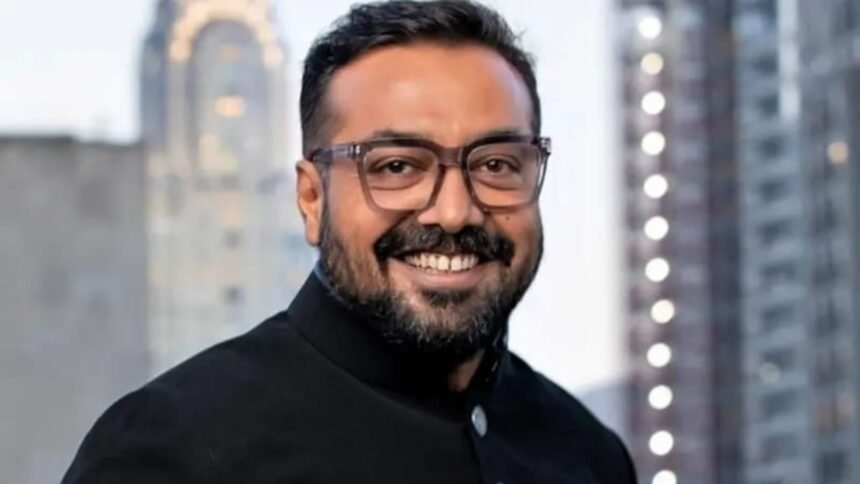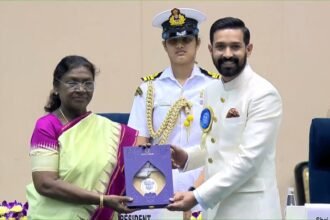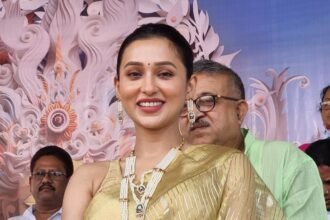Bold and fearless filmmaker Anurag Kashyap has returned, once again, with his new film ‘Nishaanchi’—ready to present audiences with characters and stories that are often unsaid and unconventional. For years, Kashyap has brought to life on screen individuals and narratives that break stereotypes. Despite challenges and criticism, he has steadfastly adhered to his vision, pushing Indian cinema into new dimensions. His words reflect emotional depth and honesty, as he openly shares the struggles of his career, the complexities of the industry, and the unseen labour behind filmmaking.
Anurag Kashyap sat down for an exclusive interview with ‘Hindusthan Samachar’. He not only discussed the making of ‘Nishaanchi’ and the journey behind its story, but also reflected on his cinematic journey.
Q: How was Aaishvary Thackeray cast in ‘Nishaanchi’?
I once saw Aaishvary’s show-reel, in which he performed Manoj Bajpayee’s monologue from the film Shool. At the time, I didn’t even know he came from Bal Thackeray’s family. I called him and gave him the script. I said, “Just read it and react.” He instantly read it and asked, “Sir, tell me, what do you want from me? Should I play ‘Bubloo’ or ‘W’?” I told him, “You have to become a full-fledged Kanpuria.” And when he embodied the character of Bubloo, he truly became an authentic street-smart Kanpuriya. The other brother, ‘W’, is educated, so there was a great contrast between the two characters. I was clear with him: “If you do another film before this one and it doesn’t work out, I might not even find a producer for my film. Making a film with a new actor is tough as it is.” He understood this and worked hard for two full years. Then, six months before the shoot, I told him it was a double role and he would be playing both characters. By then, I’d seen his range and was confident he could pull it off. Honestly, among all the young actors I’ve worked with in the industry, this is the best debut so far.
Q: The women characters in your films are always strong and impactful. Is there a reason for this?
I’ve always been drawn to the complexities of life. The “girl next door” image never made sense to me, because I’ve seen women around me who are often much stronger than men. I remember my grandmother—she was the real pillar of our household, managing everything. My mother’s memory is even deeper—by the age of 18, she was holding me, running the house, and also looking after the fields while my father was setting up a power-house. These experiences taught me that real strength and courage belong to women. Unfortunately, today’s films often lack such characters. That’s probably why the female characters in my stories are always strong, layered, and rooted in reality.
Q: Is ‘Nishaanchi’ really inspired by ‘Gangs of Wasseypur’?
Many people at first glance assume that ‘Nishaanchi’ is similar to ‘Gangs of Wasseypur’, but the reality is very different. This film is as far from Wasseypur as the distance between Kanpur and Wasseypur. ‘Nishaanchi’s’ story begins in 1986 and spans across three decades up to 2016. It’s a long journey that captures the changing face of society, politics, and crime. The film’s narrative is not limited to gang wars or any particular locality; rather, it connects the changing times and generations. That’s why directly comparing it with ‘Gangs of Wasseypur’ is not only wrong but also diminishes the film’s true canvas and depth. ‘Nishaanchi’ creates its own world, with its own characters and storyline, giving it a distinct and original identity.
Q: What’s your strategy to stay contemporary with trends and technology?
Look, after a point, a filmmaker has used almost every kind of technology in their films. If you want to keep doing good, fresh work, it’s essential to stay connected with the younger generation. That’s what I do—I collaborate with young people and try to empower them. For example, I tell my cinematographer to decide which camera to shoot with and how to shoot. This builds their confidence and unleashes their creativity. I believe that every person wants to give their best, but sometimes circumstances or a boss’s restrictions hold them back. If you remove those barriers, everyone can deliver their best work. This is the approach I use—always involving passionate, creative people in my films. This not only keeps me relevant but also infuses my work with new energy and freshness.
Q: What’s the thinking behind always giving new actors and talents a chance?
I believe that a film’s real strength lies in its characters and actors. That’s why I always give opportunities to new and emerging talents. I provide them with the chance to prepare thoroughly, giving them homework so they fully understand their roles and can perform with immersion. My focus is that the actors are well-prepared. I keep working with them, guide them, and let them freely explore themselves. This brings new energy to the film and the actors are able to present their best selves on screen.
Q: After a long time, your film is once again in the spotlight. Are you nervous about the release?
Honestly, I mostly disappear around release time. I’m not used to crowds, stress, or constantly tracking updates. I just ask the producers, “How’s it going?” and then get back to my work. I’m not among those who are obsessed with box office numbers. Of course, they matter to an extent, but for me, the real victory is if the film reaches audiences through its story and emotions. ‘Nishaanchi’ was made on a very low budget, so rather than feeling pressure or nervousness, I’m satisfied that it has sparked discussions. What matters to me is that the audience remembers the characters and story when they walk out of the cinema hall—not just the first day or first week’s collections.
Q: Are you planning to make a third part of ‘Gangs of Wasseypur’?
No, I don’t believe in making remakes or sequels. Even today, people mostly ask me about Wasseypur, but when that film was released, people reacted as if such language had never been spoken before in India—as if ‘Gangs’ was the one that taught us how to swear. In reality, Wasseypur was a realistic portrayal of North India—its land, its people, and a mirror to their lives. That’s why that film is still discussed. People often compare it to the web series Mirzapur, but frankly, Mirzapur is not that. Wasseypur was a film born of its time, its society, and its truths—nothing can replace it.



















